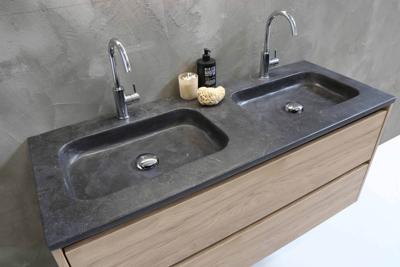
Are you concerned about the possibility of flooding in your bathroom? With all the potential sources of a flood, it's no wonder many homeowners are feeling anxious. From leaks near your toilet and bathtub to clogged pipes or overflowing gutters, there is certainly cause for concern. However, by following some simple steps, you can prevent a flood from occurring in your bathroom.
In such scenarios, it is always best to rely on a local professional like Staunch & Flow. An expert would know how to track down the cause and fix it so there are no problems in the future.
In this article, we will discuss how to identify potential issues before they become disastrous and then provide tips on how to protect yourself against water damage. Read on for some helpful guidance so that you can have peace of mind knowing your home is secure from flooding harm!
Why Do Bathrooms Flood: 5 Possible Reasons
A flooded bathroom is a problem that no homeowner wants to have, but it can and does happen from time to time. Here are some of the most common reasons behind it.
Toilet Overflow
Poorly maintained toilets can become blocked over time, leading to an overflow that could cause severe water damage if not addressed quickly. To prevent this from happening, be sure to check your toilet regularly. Call a plumber if you notice any signs of blockage or malfunctioning seals or flanges.
Faulty Plumbing Fixtures & Valves
If any fixtures within your plumbing setup are faulty or leaking - such as showerheads, bathtub taps, etc - then they may be slowly releasing water into your bathroom. Be sure to inspect all fixtures regularly & replace any broken/leaking components immediately so you don't run the risk of having an unwanted flood within your household!
Sewer Backups
Sewer backups are another possible cause of flooding in bathrooms. When wastewater drains back up into the pipes this can lead to a backup overflow which could result in extensive damage & odor problems. Make sure you contact a reputable plumber/drain cleaner should you ever notice any such issues occurring!
Blocked Drains
Blocked drains are one of the most common culprits when it comes to bathroom flooding. Grease, hair & food particles can build up over time and create clogs that need removing before serious flooding occurs. Use drain cleaners & plungers regularly (or call out professional plumbers) so you don't run into issues later down the line!
Heavy Rainfall
Finally, heavy rainfall can also be problematic as excess water has nowhere else to go. Ensure gutters/downspouts are clean at all times & include adequate drainage solutions around your home just in case this becomes necessary Sometimes simply doing enough preparation ahead of time is all that's required to avoid potential floods! UK residents should be particularly mindful of seasonal downpours and consider installing a reliable smart drain in the UK to help manage excess water effectively. Taking these preventive measures can significantly reduce the risk of flooding in your bathroom.
5 Steps To Prevent A Bathroom Flood
Insulate Pipes & Fixtures
One of the most important steps you can take to protect against a flood is to make sure all exposed pipes and fixtures are sufficiently insulated from cold temperatures. Pipe insulation works by helping keep temperatures at a more constant level, reducing the chances of freezing over winter. Use foam insulation for pipes, wrap fixtures in blankets & check for any leaks/gaps within your system.
Check Valves/Seals For Leaks
Another important step to take is to check valves & seals regularly for signs of leaking or wear & tear. Any water escaping here could cause issues if temperatures start dropping. Be sure to tighten all bolts/connections securely & replace any faulty components as soon as possible This is so there's no chance of unexpected flooding during colder months.
Use Proper Support
Pipes that haven't been properly supported may also be at risk. If they vibrate too much then the pressure will increase and lead to potential disasters. Use additional brackets & clamps (in addition to existing supports) where necessary for maximum protection against potential floods in colder weather!
Implement Drainage Solutions
Rainfall is another factor that needs accounting for. If gutters become blocked or are unable to cope with heavy rainfall then water will have nowhere else to go besides your home! Be sure to include adequate drainage solutions around the outside of a property before heavier rains arrive so you're not caught off guard unexpectedly.
Open Vents Regularly
Finally, it's also worth opening up vents regularly (when safe). This helps ensure hot air has somewhere else to go instead of becoming trapped inside a house. Remember: prevention is always better than cure when it comes to protecting against an unexpected flood in your bathroom.
If you find your bathroom often flooding, take the steps necessary to identify and eliminate the source as soon as possible. By implementing preventive measures such as inspecting plumbing connectors, and checking pipes and flanges for damage, you can ensure you prevent any unpleasant situations. Most importantly, be sure to call a certified plumber in case the problem persists or gets worse.




(0) comments
We welcome your comments
Log In
Post a comment as Guest
Keep it Clean. Please avoid obscene, vulgar, lewd, racist or sexually-oriented language.
PLEASE TURN OFF YOUR CAPS LOCK.
Don't Threaten. Threats of harming another person will not be tolerated.
Be Truthful. Don't knowingly lie about anyone or anything.
Be Nice. No racism, sexism or any sort of -ism that is degrading to another person.
Be Proactive. Use the 'Report' link on each comment to let us know of abusive posts.
Share with Us. We'd love to hear eyewitness accounts, the history behind an article.